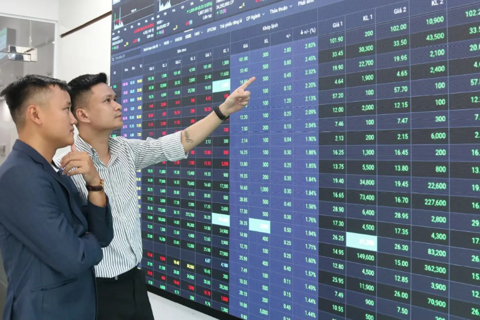Business
Vietnam lowers bad debt ratio to 6.3% amid record GDP growth
Jan 10, 2019 / 02:49 PM
The downtrend of the bad debt ratio stemmed from stricter asset classification at banks and the warm-up of the local real estate market thanks to faster economic growth which hit a decade high of 7.08% in 2018.
Vietnam has stepping up efforts to reduce legacy problem loans accumulated in years of easy lending and fast credit growth, leading to a bad debt ratio of 6.3% in the banking system as of end-2018, a central banker has said.
The ratio is much lower than 10.08% at the end of 2016 and 8.61% as of September 2017, said Le Minh Hung, governor of the State Bank of Vietnam (SBV), at a meeting of the banking sector on January 9.
Bad debts embrace non-performing loans (NPLs) registered on banks’ balance sheets, trouble loans sold to the SBV-run Vietnam Asset Management Company (VAMC), and loans that can potentially turn into toxic debts.
NPLs in Vietnam accounted for up to 17.2% of total lending in 2012, among the highest ratios in Asia, according to Fitch.
The downtrend of the bad debt ratio stemmed from stricter asset classification at banks and the warm-up of the local real estate market with faster economic growth which hit a decade high of 7.08% in 2018.
During 2018, as much as VND149.22 trillion (US$6.37 billion) worth of NPLs was handled. Trouble loans on banks’ balance sheets accounted for 1.89% of total credit, down from 1.99% at end-2017 and 2.46% at end-2016, Governor Hung informed.
An SBV official said in August 2018 that between 2012 and June 2018, up to VND785.93 trillion (US$33.6 billion) in bad debt was cleaned up.
Prime Minister Nguyen Xuan Phuc said on January 9 that the whole banking system had tackled some VND900 trillion (US$38.5 billion) worth of toxic debt, without giving a timeframe.
The government aims to reduce the bad debt ratio at banks to below 2% and the overall ratio in the banking system to below 5% this year.
To deal with the piling bad debt in the banking system, which is considered the arterial vein of the local economy, the government set up VAMC in July 2013 to purchase NPLs from local credit institutions. By selling NPLs to VAMC, banks buy more time to clean up the legacy loans from their balance sheets.
The National Assembly in 2017 issued Resolution 42, giving banks and VAMC more powers to deal with NPLs. During one year after the resolution took effect, VAMC cleared VND48 trillion (US$2.05 billion) of NPLs, nearly half of the amount the company had handled since its inception.
Local experts have said that more steps are needed to radically handle bad debt, including the formation of a debt trading market with more active participation of both domestic and foreign players.

The headquarters of the State Bank of Vietnam in Hanoi. Photo: Minh Tuan
|
Bad debts embrace non-performing loans (NPLs) registered on banks’ balance sheets, trouble loans sold to the SBV-run Vietnam Asset Management Company (VAMC), and loans that can potentially turn into toxic debts.
NPLs in Vietnam accounted for up to 17.2% of total lending in 2012, among the highest ratios in Asia, according to Fitch.
The downtrend of the bad debt ratio stemmed from stricter asset classification at banks and the warm-up of the local real estate market with faster economic growth which hit a decade high of 7.08% in 2018.
During 2018, as much as VND149.22 trillion (US$6.37 billion) worth of NPLs was handled. Trouble loans on banks’ balance sheets accounted for 1.89% of total credit, down from 1.99% at end-2017 and 2.46% at end-2016, Governor Hung informed.
An SBV official said in August 2018 that between 2012 and June 2018, up to VND785.93 trillion (US$33.6 billion) in bad debt was cleaned up.
Prime Minister Nguyen Xuan Phuc said on January 9 that the whole banking system had tackled some VND900 trillion (US$38.5 billion) worth of toxic debt, without giving a timeframe.
The government aims to reduce the bad debt ratio at banks to below 2% and the overall ratio in the banking system to below 5% this year.
To deal with the piling bad debt in the banking system, which is considered the arterial vein of the local economy, the government set up VAMC in July 2013 to purchase NPLs from local credit institutions. By selling NPLs to VAMC, banks buy more time to clean up the legacy loans from their balance sheets.
The National Assembly in 2017 issued Resolution 42, giving banks and VAMC more powers to deal with NPLs. During one year after the resolution took effect, VAMC cleared VND48 trillion (US$2.05 billion) of NPLs, nearly half of the amount the company had handled since its inception.
Local experts have said that more steps are needed to radically handle bad debt, including the formation of a debt trading market with more active participation of both domestic and foreign players.







